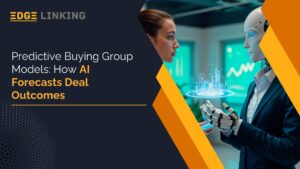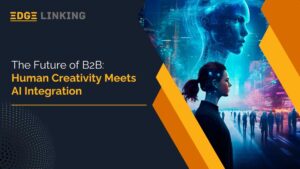In today’s changing digital world, social media is no longer a networking site—it is an economic giant. Advertisers pump billions of dollars into campaigns on social media, using platforms such as Facebook, Instagram, Twitter, and TikTok to find prospects.
But as AI expands, there’s another danger—social media bots. These AI-based bots, designed to behave human-like, obscure the line between real interaction and manipulation.
The question remains: Can brands actually measure social media success if fake engagements and bot interactions skew the data? With digital ad spend reaching astronomical levels, the battle for authenticity of online interaction intensifies.
Let’s look at the role of AI in advertising, the hidden influence of social media bots, and the future of digital marketing.
The $234.14 Billion Question
In 2024, online marketers will spend an eye-popping $234.14 billion on social media advertisements. The why is obvious—social media provides targeted ad options, deep feedback data, and access to more than a billion customers worldwide. But there’s the catch: all interactions aren’t from real consumers.
Social media robots, typically powered by artificial intelligence, can like, share, comment, and even have conversations virtually indistinguishable from humans. While some brands purposefully use bots to artificially inflate the number of engagements, others inadvertently pay for ad views and interactions that are not authentic.
The Bot Economy
Bots exist in various shapes:
•Good Bots: These perform tasks such as customer service, personalized suggestions, or content aggregation.
•Malicious Bots: These artificially inflate engagement metrics, propagate disinformation, and manipulate public opinion.
•Click Farms: Large-scale click farms where actual humans, usually in low-income areas, manually engage with content to simulate real engagement.
As per a CHEQ report, an AI-based cybersecurity company, more than 11% of total digital advertising expenditure is lost to deceptive interactions, and advertisers lose billions every year. That is a vital question—are brands really connecting with their audience, or are they trapped in an illusion of engagement?
The Effect Beyond Advertising
The scope of AI-based bots extends beyond advertising to public opinion, social movements, and even elections. Social media bots have the potential to amplify messages, create fake trends, and influence opinions at an unprecedented scale. Some of the fields most impacted by social media bots include:
1. Political Manipulation
Bots have greatly influenced political speech. During elections, bot accounts have been used to spread propaganda, create fake debates, and create artificial backing for candidates. Research conducted by Oxford University found that more than 45% of Twitter conversation on political topics can be traced to bots.
2. Stock Market & Cryptocurrency
Financial markets are increasingly influenced by social media sentiments. AI-powered bots can drive the price of stocks or cryptocurrency by artificially inflating the popularity of certain assets. For instance, a torrent of bot messages on Twitter can drive up the price of a cryptocurrency before the subsequent sharp sell-off, generating volatility.
3. Brand Reputation & Fake Reviews
Authenticity is the basis of consumer trust. Positive and negative fraudulent reviews are a threat to brands on platforms like Amazon, Google, and Yelp. AI-driven bots post thousands of fraudulent reviews in order to build or kill a brand’s image. According to a report from the World Economic Forum, more than 30% of online reviews are found to be fake, misleading customers and skewing the authenticity of real feedback.
4. Content Virality & Artificial Trends
AI bots are also used to push hashtags, making specific problems or products trend unnaturally. A product or a cause instantaneously gaining popularity might not always be due to natural interaction but because of a coordinated bot-driven campaign.
What’s Next?
The fight against AI-powered social media bots is not simple, but a few measures are being taken against the problem:
1. Tighter Platform Rules
Social media behemoths such as Meta, X (formerly Twitter), and TikTok are deploying sophisticated bot-detection algorithms to block fake accounts. But the more advanced AI becomes, the more advanced the bots get. The platforms need to invest in a constant process of refining detection techniques to remain ahead of scams.
2. AI vs. AI: The Battle Against Bots
Ironically, AI is also being used to combat AI. Google and Facebook are using machine learning models to spot and block bots in real-time. They use tools that check behavioral patterns, interaction history, and IP addresses in order to spot fake accounts.
3.Regulatory Action & Government Intervention
Governments around the world are intervening to govern AI-led bot behavior. The European Union’s Digital Services Act (DSA) requires that there be transparency in automated platforms so that people know when they’re dealing with bots. These types of things are being examined in the United States and other nations as a means of blocking AI from misuse in manipulation.
4. Blockchain & Decentralization
Some experts also think that blockchain technology can aid in authenticating authenticity in digital interactions. Decentralized social media platforms on blockchain could make identity verification a requirement, thus making it difficult for bots to go unnoticed.
5. Consumer Awareness & Digital Literacy
The best defense against bot-facilitated deception is an educated audience. Users must be taught how bots work, how to recognize false interactions, and how to check facts before posting. Media literacy instruction and AI-detection programs can empower consumers to more effectively critically interact with the digital environment.
6. Ethical AI Development
As AI technology advances, businesses need to prioritize ethical AI development. This involves AI advertising transparency, more stringent policies on automated interactions, and verifying that AI tools are created to augment, not manipulate, the user experience. Ethical AI frameworks can create a balance where automation helps businesses grow without deceiving audiences.
Conclusion: The Future of AI and Authentic Engagement
The war of AI, ads, and authenticity is not near its end yet. While digital engagement has indeed been transformed through social media robots, they’ve also given us a skewed perception of reality whereby brands, ads, and people cannot tell actual from artificial contact. As technology advances, maintaining automation and originality under control will determine whether online environments are authentic and reliable.
For advertisers, the decision is simple—money needs to be spent on AI-enabled advertising, but so too must money go into the pockets of actual human beings. With ever-tightening regulatory environments and ever-evolving AI-enabled detection tools, the future of social media activity will probably be one in which human connections matter more than bots-made metrics.
The question is, in an increasingly AI-dominated world, will authenticity be the top dog, or will bots persist in simulating web interactions? Only time will tell, but this much is true—AI has come to stay, and the battle for authentic digital interaction has just started.






